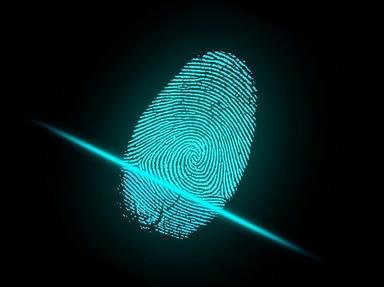Quiz Answer Key and Fun Facts
1. What was one of the problems during early blood tests? (Around 1875)
2. Assuming there is no problem with the rhesus factor, can a person with type A blood safely be transfused with type O blood?
3. Preliminary tests to identify blood are almost always conclusive.
4. Are there any circumstances in which someone's blood type can change?
5. Apart from blood, what bodily fluid is usually found in rape cases?
6. DNA is found wherever red blood cells are present.
7. What system used by the FBI compiles DNA of known violent offenders from all over the nation and can be used to match DNA with a sample found at a crime scene?
8. A person with RH protein on their blood cells can be infused with blood without the RH protein.
9. Take this scenario:
A woman gets out of bed, watches TV, talks on the phone, pats her cat, and then shoots her husband. She hides the gun and runs away. Which object would be most useful to the forensic serologist in finding out who the woman was?
10. You can alter your DNA so it will appear to be different.
Source: Author
toadsworth65
This quiz was reviewed by FunTrivia editor
crisw before going online.
Any errors found in FunTrivia content are routinely corrected through our feedback system.

